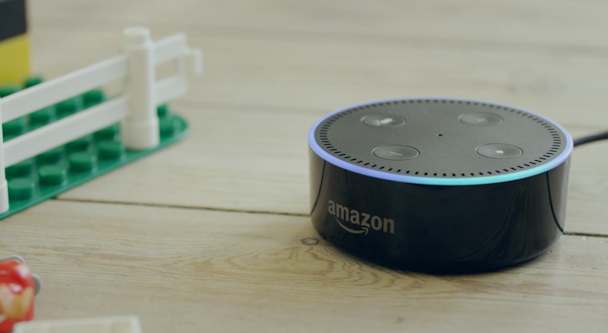Why Lego is turning to Alexa and AR to safeguard the future of its humble brick
Lego’s experiments with emerging tech like the Amazon Echo are going “better than expected” as the toymaker battles to stave off a sales slump amid growing competition from more modern toys, and the internet.

This year its been infusing bricks with digital magic as it looks to show that building isn’t restricted to the physical world / Lego
When Lego’s sales and profits fell for the first time in 13 years in 2017, the Danish company blamed the 8% dip on producing “too many” bricks. Now, it’s putting those humble, oblong bits of plastic at the heart of experiments with Amazon amid a “reset” designed to safeguard the future of its business.
It should come as no surprise that Lego is cosying up to the e-commerce giant. Amazon has dominated the online toys marketplace; in the US it accounted for 88.9% of Lego's online sales in 2017 according to analytics firm Jumpshot. And this growth looks set to continue with research from GlobalData predicting that Amazon will overtake Argos to become the largest toy retailer in the UK by 2020.
Since May, it’s been working with Amazon on its 'voice' strategy, bringing several Alexa skills to the Echo for its pre-school Duplo blocks, allowing parents to access voice-guided instructions for toddlers as well as stories and audio prompts that guide physical play.
William Thorogood, senior innovation director at Lego’s Creative Play Lab – where adults are charged with dreaming up products that will spur kids’ imaginations – is coy about sharing results but tells The Drum things are going better than anticipated with these experiments.
“We're looking ahead to learn from these and implement them into other launches and other exciting experiences,” he adds.
This year it has also been infusing bricks with digital magic as it looks to show that building isn’t restricted to the physical world, introducing an AR studio app which harnesses augmented reality to let children play with digital Lego sets in real-world settings (think fire-breathing dragons in flying around the kitchen).
‘Fluid play’
Despite successful forays into video games and movies, Thorogood said the brick is still the most important part of Lego’s brand and there’s no chance of it becoming a pure digital player any time soon.
“It's the core of what we do,” he explains, “there's something about having the tangibility of having two bricks people can put together to create something they can show others. It's not just a solitary experience, it's a very social one.”
Despite the financial setback last year, Lego still has lot of brand love. It recently replaced British Airways as the top brand for consumers in the UK.
To keep this momentum rolling for the next generation, it is trying to figure out how best to appeal to the changing media and playing habits of kids by enhancing its experience with digital play and virtual worlds.
In Lego speak, it’s called ‘fluid play’.
It's based on the brand’s own insight that globally 47% of kids spend more than three hours a week with technology, but 72% say they play more with their face-to-face with their friends than they do with with online friends. Lego is looking to strike the balance between the two – investing in creating products that let kids move seamlessly between real and virtual spaces.
"For us, there's a very exciting opportunity to broaden what we do and for an innovation team it's a chance to start tying some knots together around experiences that take kids to new places when they play," Thorogood continues.
Lego’s total innovation team is “enormous”, with Thorogood’s Play Lab team standing at 80-strong. And each project will brings in talent from marketing, design and other departments in addition to a “huge” panel of children and families that inform the Lab’s creations.
Some of Lego’s efforts in this area have been more educational, like the Duplo steam trains it has built to teach kids how to code. Aimed at those between two and five the product gets kids to place action bricks on the train ‘tracks’ that trigger reactions from the driver, both physically and in an accompanying app.
Quizzed on whether Lego might push more into its own hardware to bring its AR and voice creations to life, Thorogood doesn’t rule it out.
“That roadmap is hard to predict at this point… but we’re trying to understand the best way the best way we can provide experiences to a child and then trying to understand the levers that will take us there – whether that’s hardware, partnerships, software or just core brick play – every experience is different and brings a different value to play.”

